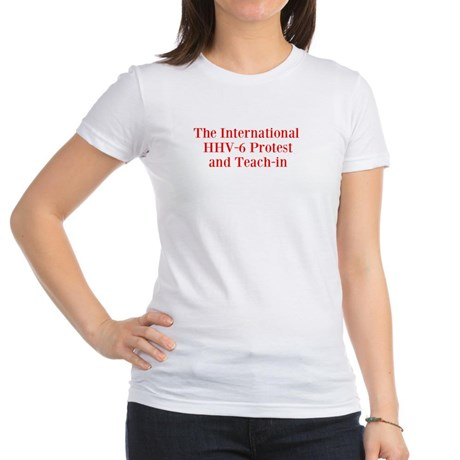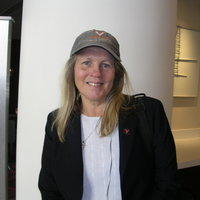HHV-6A infection induces expression of HERV-K18-encoded superantigen
Abstract
Background
The human endogenous retrovirus K-18 (HERV-K18) encodes a superantigen that causes deregulation of the immune system. This provirus is transcriptionally silent, but can be induced by Epstein–Barr virus (EBV) infection and IFN-α treatment.Objectives
Since the herpesvirus EBV induces HERV-K18 expression in human B cells, it was of interest to determine if other herpesviruses would have similar HERV-K18 transactivation properties. Human herpesvirus (HHV)-6A, a neurotropic virus associated with multiple sclerosis, was a logical candidate for these studies.Study design
HSB2 cells (HHV-6-negative control), HSB2-ML cells (containing latent HHV-6A genome) and HSB2/HHV-6A cells (HSB-2 cells productively infected with HHV-6A) were compared for their level of HERV-K18 transcription, using quantitative RT-PCR.Results
Latently infected HSB2-ML cells showed a significant increase in HERV-K18 RNA compared to the control cells. HERV-K18 expression was even greater in HSB2 cells productively infected with HHV-6A for 78h.Conclusion
These results imply that HHV-6A, either in latent form or during acute infection, directly transactivates HERV-K18. This HERV-K18 induction may be mediated through IFN-α that is produced by the HHV-6A-infected cells. The functional implications of superantigen expression are discussed.http://www.journalofclinicalvirology.com/article/S1386-6532%2809%2900194-2/abstract
About Superantigens
Superantigens (SAgs) are a class of antigens which cause non-specific activation of T-cells resulting in polyclonal T cell activation and massive cytokine release. SAgs can be produced by pathogenic microbes (including viruses, mycoplasma, and bacteria)[1] as a defense mechanism against the immune system.[2] Compared to a normal antigen-induced T-cell response where .001-.0001% of the body’s T-cells are activated, these SAgs are capable of activating up to 20% of the body’s T-cells.[citation needed] Furthermore, Anti-CD3 and Anti-CD28 Antibodies (CD28-SuperMAB) have also shown to be highly potent superantigens (and can activate up to 100% of T cells).The large number of activated T-cells generates a massive immune response which is not specific to any particular epitope on the SAg thus undermining one of the fundamental strengths of the adaptive immune system, that is, its ability to target antigens with high specificity. More importantly, the large number of activated T-cells secrete large amounts of cytokines (the most important of which is TNF-alpha). TNF-alpha is particularly important as a part of the body's inflammatory response, and in normal circumstances (where it is released locally in low levels) helps the immune system defeat pathogens. However when it is systemically released in the blood and in high levels (due to mass T-cell activation resulting from the SAg binding), it can cause severe and life-threatening symptoms, including shock and multiple organ failure.
http://en.wikipedia.org/wiki/Superantigen
Brigitte Huber on EBV and IFN-a activation of the human endogenous retrovirus HERV-K18 and CFS
http://www.scivee.tv/node/6864Statement on HERV-K18 from the Brigitte Huber Lab
"We are working to determine the ways in which HERV-K18 influences human disease. HERV-K18 is one of many endogenous human retroviruses in the normal human genome. This particular element is activated in a variety of ways, including interferon stimulation."http://sackler.tufts.edu/Academics/Degree-Programs/PhD-Programs/Faculty-Research-Pages/Brigitte-Huber.aspx
Smoldering Infections of Two Common Viruses EBV and HHV-6 Cause Inherited Retrovirus Genes to Activate
BALTIMORE, MD--(Marketwire - June 23, 2008) - Brigitte Huber, PhD, of the Tufts University School of Medicine, presented evidence at a medical conference that suggested that a reactivated ancient retrovirus embedded in the human genome may be active in chronic fatigue syndrome (CFS) and multiple sclerosis (MS) patients. Danish scientists at the same conference suggested that the activation of this retrovirus, dormant in healthy individuals, could be the reason why autoimmune conditions worsen with viral infections.Chronic Fatigue Syndrome and Multiple Sclerosis Patients at Increased Risk From the Effects of HERV-K18 Activation
"Patients with profoundly fatiguing diseases such as MS and CFS may be particularly susceptible to HERV-K18 activation," said Dr. Huber. The announcement was made at the International Symposium on Viruses in CFS and Post-Viral Fatigue, a satellite conference of the 6th International Conference on HHV-6 & 7. Using an SNP-based genotyping method, Dr. Huber found that both MS and CFS patients (whose illness had been triggered by infectious mononucleosis) were at a higher relative risk for containing HERV-K18 variants known to induce superantigen activity. Superantigens are proteins that are able to induce a strong undifferentiated T-cell response believed to deplete the immune system over time.
Viral activity and/or immune activation has been shown to trigger HERV-K18 activity. Both Epstein-Barr virus infection (infectious mononucleosis) and interferon-alpha administration are associated with HERV-K18 activity. "HHV-6 activates HERV-K18 as well," said Danish investigator Per Hollsberg, MD and professor from the University of Aarhus In Denmark. His PhD student Vanda Lauridsen Turcanova presented this data at the same conference. "Furthermore, this retrovirus activation may have important consequences for autoimmunity," he added.
HERV-K18 activation may be the endpoint of an HHV6/EBV interferon pathway operating in both MS and CFS. HHV-6 is being investigated as a co-factor in both diseases. Other retroviruses, HERV-H and HERV-W, have been implicated in MS by other researchers. Over 75% of MS patients meet the criteria for CFS. Fatigue is often the most disabling symptom for MS patients. The two diseases also share characteristics such as grey matter atrophy, impaired cerebral glucose metabolism, autonomic nervous system activity and altered patterns of brain activity.
Dr. Huber's study suggests that endogenous retroviral activation in CFS and MS could produce some of the symptoms associated with both diseases. She has received a National Institutes of Health (NIH) grant to study these issues. Per Hollsberg has done extensive research on the role of EBV
http://www.marketwire.com/press-release/Ancient-Retrovirus-May-Contribute-Chronic-Fatigue-Syndrome-Multiple-Sclerosis-Autoimmunity-871774.htm










